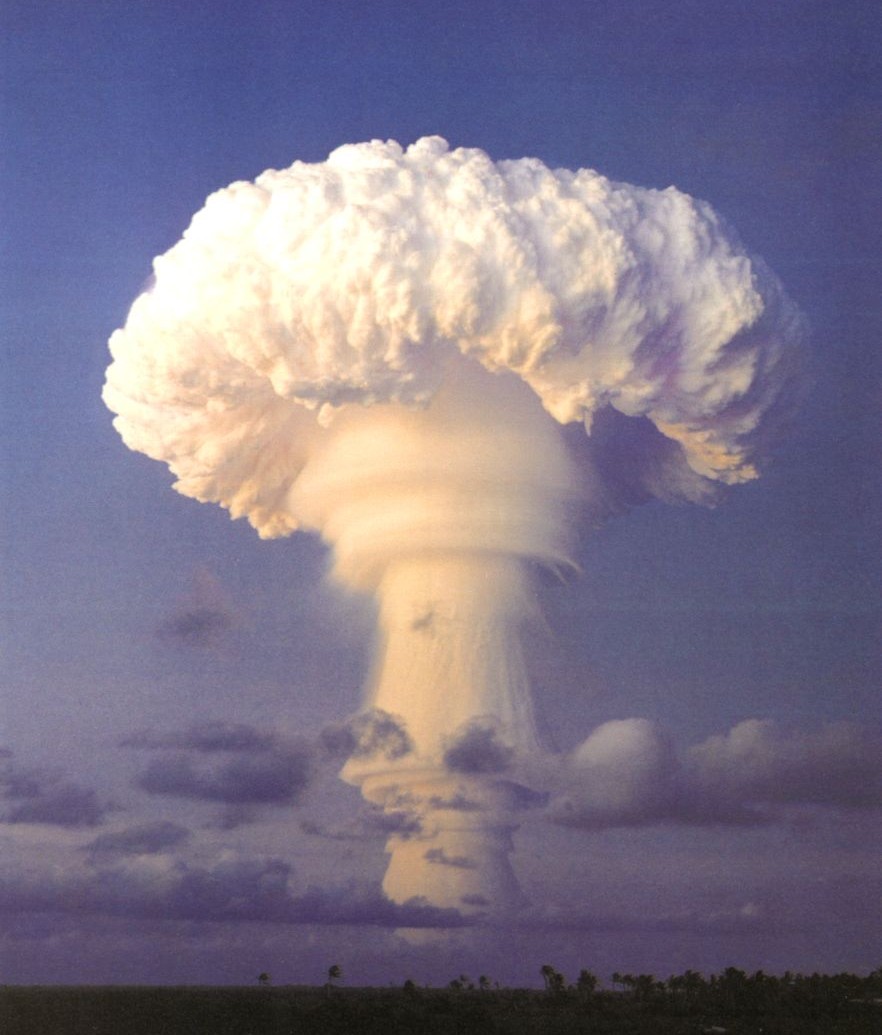:max_bytes(150000):strip_icc():format(webp)/atom-splitting-in-nuclear-fission-587169643-5792680a3df78c1734990723.jpg)
................................................................................................................................................................
Nuclear Radiation Definition
By Anne Marie Helmenstine, Ph.D.
Nuclear
radiation refers to the particles and photons emitted
during reactions that involve the nucleus of
an atom.
Nuclear
radiation is also known as ionizing radiation or ionising radiation (depending
on the country).
The
particles emitted by nuclear reactions are sufficiently energetic that they can
remove electrons from atoms and molecules and ionize them.
Nuclear
radiation includes gamma rays, x-rays, and the more energetic portion of the
electromagnetic spectrum.
Ionizing
subatomic particles released by nuclear reactions include alpha particles, beta
particles, neutrons, muons, mesons, positrons, and cosmic rays.
Nuclear Radiation Example
During
the fission of U-235 the nuclear radiation that is released contains neutrons
and gamma ray photons.
Radiation
and radioactivity are
two easily confused concepts. Just remember, a substance does not need to be
radioactive to emit radiation.
Let's
look at the definition of radiation and see how it differs from radioactivity.
Radiation Definition
Radiation
is the emission and propagation of energy in
the form of waves, rays or particles. There are three main types of radiation:
· Non-ionizing
radiation: This is the release of
energy from the lower-energy region of the electromagnetic spectrum. Sources of
non-ionizing radiation include light, radio, microwaves,
infrared (heat), and ultraviolet
light.
· Ionizing
radiation: This is radiation with
sufficient energy to remove an electron from an atomic orbital, forming an ion.
Ionizing radiation includes x-ray, gamma rays, alpha particles, and beta
particles.
· Neutrons: Neutrons are
particles found in the atomic nucleus. When they break away
from the nucleus, they have energy and act as radiation.
Examples of Radiation
Radiation
includes emanation of any portion of the electromagnetic
spectrum, plus it includes the release of particles. Examples
include:
· A
burning candle emits radiation in the form of heat and light.
· The Sun
emits radiation in the form of light, heat, and particles.
· Uranium-238
decaying into Thorium-234 emits radiation in the form of alpha
particles.
· Electrons
dropping from one energy state to a lower state emit radiation in the form of a
photon.
Difference Between Radiation and Radioactivity
Radiation
is the release of energy, whether it takes the form of waves or particles.
Radioactivity
refers to the decay or splitting of an atomic nucleus. A radioactive material releases
radiation when it decays.
Examples
of decay include alpha decay, beta decay, gamma decay, neutron release, and
spontaneous fission.
All
radioactive isotopes release radiation, but not all radiation comes from
radioactivity.
Anne Marie Helmenstine, Ph.D.
Chemistry Expert
Education
Ph.D., Biomedical Sciences, University of
Tennessee at Knoxville
B.A., Physics and Mathematics, Hastings
College
Introduction
Ph.D. in biomedical sciences from the
University of Tennessee at Knoxville - Oak Ridge National Laboratory.
Science educator with experience
teaching chemistry, biology, astronomy, and physics at the high school,
college, and graduate levels.
ThoughtCo and About Education chemistry
expert since 2001.
Widely-published graphic artist,
responsible for printable periodic tables and other illustrations used in
science.
Experience
Anne Helmenstine, Ph.D. has covered
chemistry for ThoughtCo and About Education since 2001, and other sciences
since 2013. She taught chemistry, biology, astronomy, and physics at the high
school, college, and graduate levels. She has worked as a research
scientist and also abstracting and indexing diverse scientific literature for
the Department of Energy.
In addition to her work as a science
writer, Dr. Helmenstine currently serves as a scientific consultant, specializing
in problems requiring an interdisciplinary approach. Previously, she
worked as a research scientist and college professor.
Education
Dr. Helmenstine holds a Ph.D. in
biomedical sciences from the University of Tennessee at Knoxville and a
B.A. in physics and mathematics with a minor in chemistry from Hastings
College. In her doctoral work, Dr. Helmenstine developed ultra-sensitive
chemical detection and medical diagnostic tests.
ThoughtCo and Dotdash
ThoughtCo is a premier
reference site focusing on expert-created education content. We are one of the
top-10 information sites in the world as rated by comScore, a leading Internet
measurement company. Every month, more than 13 million readers seek answers to
their questions on ThoughtCo.
For more than 20 years, Dotdash brands
have been helping people find answers, solve problems, and get inspired. We are
one of the top-20 largest content publishers on the Internet according to
comScore, and reach more than 30% of the U.S. population monthly. Our brands
collectively have won more than 20 industry awards in the last year alone, and
recently Dotdash was named Publisher of the Year by Digiday, a leading industry
publication.
https://www.thoughtco.com/definition-of-nuclear-radiation-605423
:max_bytes(150000):strip_icc():format(webp)/atom-splitting-in-nuclear-fission-587169643-5792680a3df78c1734990723.jpg)
You might also like:
CLICK HERE . . . to view . . .
.............................................................................................................
CLICK HERE . . . to view . . .
.............................................................................................................
CLICK HERE . . . to view . . .
.............................................................................................................
CLICK HERE . . . to view . . .
.............................................................................................................
CLICK HERE . . . to view . . .
:max_bytes(150000):strip_icc():format(webp)/atom-splitting-in-nuclear-fission-587169643-5792680a3df78c1734990723.jpg)




No comments:
Post a Comment